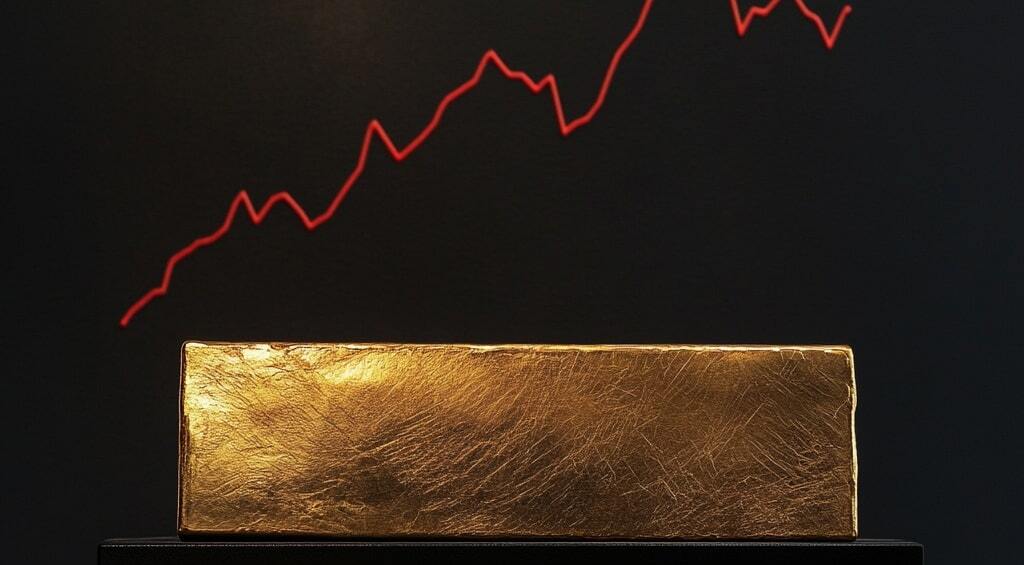Gold Prices Stabilize After Recent Surge: Key Levels to Watch
Gold's Recent Price Movement Gold (XAU/USD) has seen notable volatility, recently hitting a high of $2758.53 before pulling back slightly to $2736.02, reflecting a 0.36% decline on Friday. The retracement follows a significant rally, driven by investor profit-taking after the sharp rise. Traders are now closely monitoring gold's price action as it consolidates, with key technical levels coming into focus.
Critical Support and Resistance Levels
- Resistance at $2758.53 remains a key upside level to confirm further bullish momentum.
- Support around $2604.39, bolstered by the 50-day moving average at $2598.78, is critical for preventing a deeper correction.
How the market reacts to these levels will shape gold’s next move, as traders weigh potential breakout opportunities against a backdrop of ongoing volatility.
Geopolitical Risks Bolster Safe-Haven Demand for Gold
Gold's recent rally has been fueled by escalating geopolitical tensions, particularly in the Middle East. The conflict between Israel and Hezbollah has led to a surge in safe-haven buying, with gold acting as a hedge against uncertainty. While U.S. diplomatic efforts to de-escalate the situation continue, market participants remain on edge, with any further escalations potentially driving gold prices higher.
Middle East Tensions The ongoing conflict is a key factor underpinning demand for gold, and any developments that increase instability in the region could serve as a catalyst for further gains in the precious metal.
Upcoming U.S. Economic Data Could Influence Gold’s Trajectory
Next week, U.S. economic data on inflation and GDP growth will play a pivotal role in shaping market expectations. These reports could impact Federal Reserve policy, with a weaker inflation reading potentially driving dovish sentiment, which in turn would support higher gold prices. On the other hand, stronger economic data could strengthen the U.S. dollar, putting pressure on gold.
Analysts are particularly focused on inflation figures, which could either ease or reinforce expectations of future Fed rate cuts. Gold remains sensitive to any shifts in these expectations, given its inverse relationship with interest rates and the dollar.
Asian Demand for Physical Gold Faces Challenges
Despite gold’s strong 31.9% year-to-date gain, physical demand in major Asian markets has been hit by high prices. In China, higher costs have led to larger discounts, while in India, consumer buying has slowed, particularly during key seasonal periods. This trend could act as a moderating force on gold's price rally, as diminished physical demand may weigh on the metal’s overall performance.
Chinese Discounts: Retailers in China have been offering gold at significant discounts to stimulate demand, a sign that consumers are wary of high prices.
Unless new drivers emerge, such as increased central bank purchases or heightened geopolitical tensions, the reduced physical buying could temper gold's ability to sustain its recent gains.
The U.S. Dollar and Treasury Yields Weigh on Gold
A stronger U.S. dollar, combined with steady 10-year Treasury yields at 4.2%, has created additional pressure on gold prices. The dollar is set for its fourth consecutive week of gains, supported by risk aversion and persistent expectations for a cautious Fed. As the Fed continues to focus on controlling inflation, any signals of further rate hikes or a prolonged high-rate environment could weigh on gold.
Fed’s Position: While inflation remains a concern, Federal Reserve officials have indicated a cautious approach to reducing rates, which keeps the dollar strong and could challenge gold’s upside potential.
Gold’s Technical Outlook: Key Indicators to Monitor
From a technical perspective, gold’s recent pullback could be seen as a temporary consolidation before another leg higher. The market remains in a bullish posture, having recently broken out of a flag formation, which suggests a measured move towards the $2800 level. However, should prices dip below $2681.46, further declines could be expected, with $2600 serving as a critical support level.
In the long term, many analysts expect gold to test the $3000 mark, driven by persistent inflationary pressures, geopolitical instability, and continued central bank demand.
Outlook for Gold Prices Amid Market Uncertainty
While profit-taking and a strong U.S. dollar have posed challenges for gold in the short term, the metal remains well-supported by ongoing geopolitical risks and inflationary concerns. The combination of safe-haven demand, central bank buying, and macroeconomic factors suggests that gold’s bullish trend could continue, with key levels like $2758.53 and $2598.78 offering important guidance on the market’s next move.
Traders should continue to monitor these levels closely, as a break above resistance could signal a fresh rally toward $2800, while a breach of support may open the door to further corrections.




















